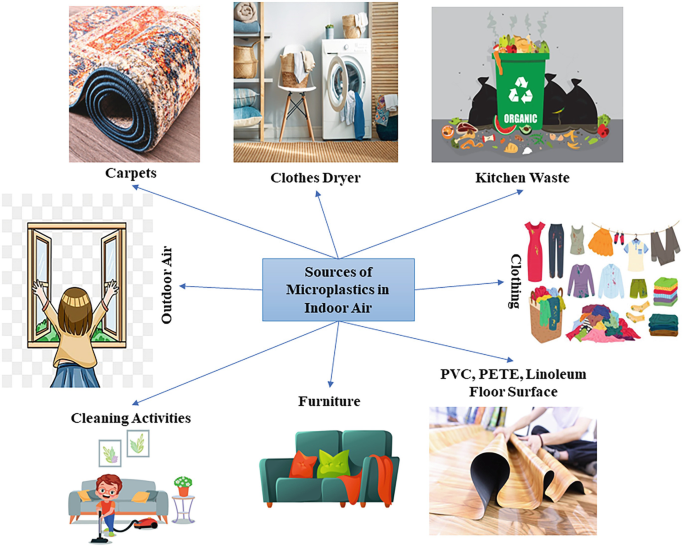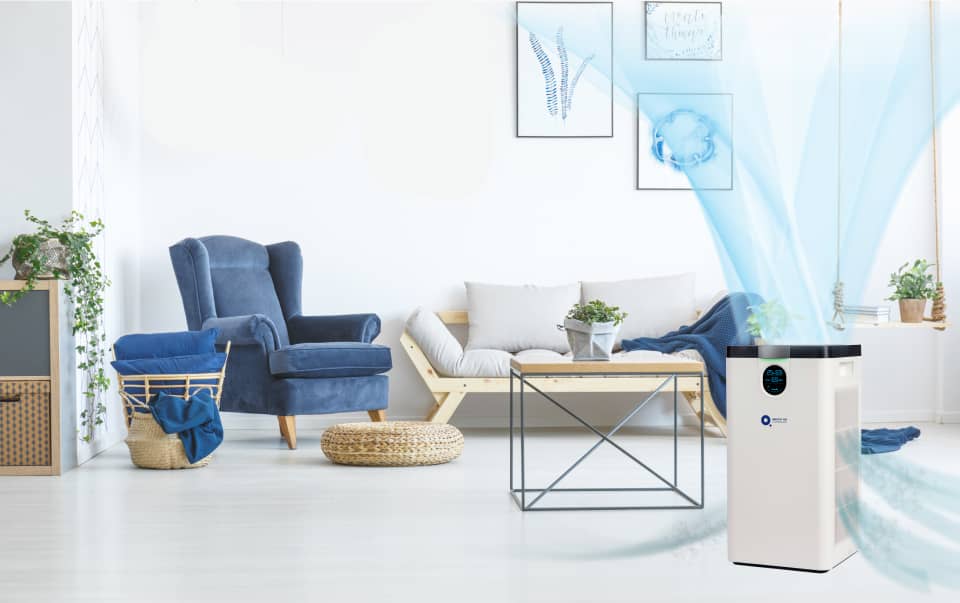What are Microplastics?
Microplastics are tiny plastic fragments less than 5mm in size that often go unnoticed, but are everywhere. They’re not just floating in oceans or trapped in packaging; they’re right here in our homes, quietly polluting the air we breathe. In many African households, synthetic materials are everywhere; from the polyester in our:
- Clothes & curtains
- Plastic chairs,
- Electronics,
- Carpets, and even
- Cleaning tools
Add open waste burning to the mix, and we unknowingly turn our indoor spaces into silent collectors of plastic dust. With every breath, our lungs inhale what our eyes can’t see.
In this blog, we’ll uncover just how deep this problem runs and emphasize the innovative indoor air cleaning solution (Healthy Air DNO Catalyst Purifier) that doesn’t just trap these toxins but destroys them at the molecular level. Ready to breathe better? Let’s dig deeper.

Indoor Air Exposure to the Hidden Microplastic Trap
Emerging research paints a troubling picture! Indoor air often contains higher concentrations of microplastics than outdoor air, particularly in densely populated urban homes, offices, and classrooms.
Here is Why
- Closed, poorly ventilated spaces allow airborne microplastics to accumulate over time.
- Widespread use of synthetic materials-from plastic furniture to nylon curtains, constantly sheds microscopic fragments into the air.
- Everyday activities like sweeping the floor, sitting on the couch, or drying clothes release these particles without us realizing.
Real Relevance in Africa
With plastic pollution growing across Nigeria and other African countries, and most homes lacking proper air filtration, indoor air is often more toxic than it seems. Where we’re supposed to feel safest, we may unknowingly be breathing in more plastic than we ever imagined.
Key Findings:
- The average person may inhale thousands of microplastics particles each year
- Children, the elderly, and pets are more vulnerable due to their proximity to floors and lower breathing zones.
📚 Sources: Jenner et al. (2021), Gasperi et al. (2018), Prata et al. (2020)

Health Concerns
While research is still ongoing, what we know already demands attention:
- Inhaled microplastics can penetrate deep into the lungs, causing inflammation, irritation, and chronic respiratory issues
- They often carry toxic chemicals (like BPA, phthalates) or even bacteria and fungi on their surfaces lead to long-term health problems and even infertility.
- Some may enter the bloodstream, with early animal studies suggesting potential effects on the nervous system and brain function
For people already dealing with asthma, allergies, or pollution-related fatigue—common in cities like Lagos, Port Harcourt, Abuja, Nairobi, and Accra—microplastics may silently worsen symptoms.
Relevance to Air Purifier Performance
✅ Do Air Purifiers Remove Microplastics?
Yes. But not all air purifiers. It’s very important to consider the capacity and functionality of the air purifier before choosing which one to install in your indoor spaces.
What Makes the DNO Catalyst Different?
The Healthy Air Purifier does more than trap microplastics in the air, it breaks down and eliminates them at the molecular level. With over 10 years of intensive research at the Oxford University, England. The D-Orbital Nano Oxide Catalyst was developed to:
- Capture and Eliminate 99.99% indoor air pollutants without the risk of secondary release or side effects.
- Destroy Organic Pollutants: such as microplastics, VOCs, bacteria, viruses, and harmful gases
- Break Down Harmful Compounds releasing fresh, oxygen rich air
- Fit medical and non-medical indoor environments
- Safe and Silent, ideal for bedrooms, nurseries, offices, hospitals, and homes with asthma-prone individuals
“Unlike regular filters, the DNO unit doesn’t just catch the problem — it kills it.”

Key Takeaways for Indoor Air Quality in Africa
- Microplastics are invisible threat in our homes, schools, hospitals and offices
- They affect not only lungs and immune systems but may have long-term effects on brain and heart health
- Traditional air filters cannot destroy plastic-related pollutants — only trap them
- Catalytic air purification (like Healthy Air’s DNO technology) is better equipped for Africa’s complex indoor pollution challenges — from microplastics to moulds, smoke, and chemical toxins.
Final Thought: “In a world where the air indoors can quietly poison you, a purifier that destroys toxins – not just stores them – is not a luxury. It’s optimum protection.”


